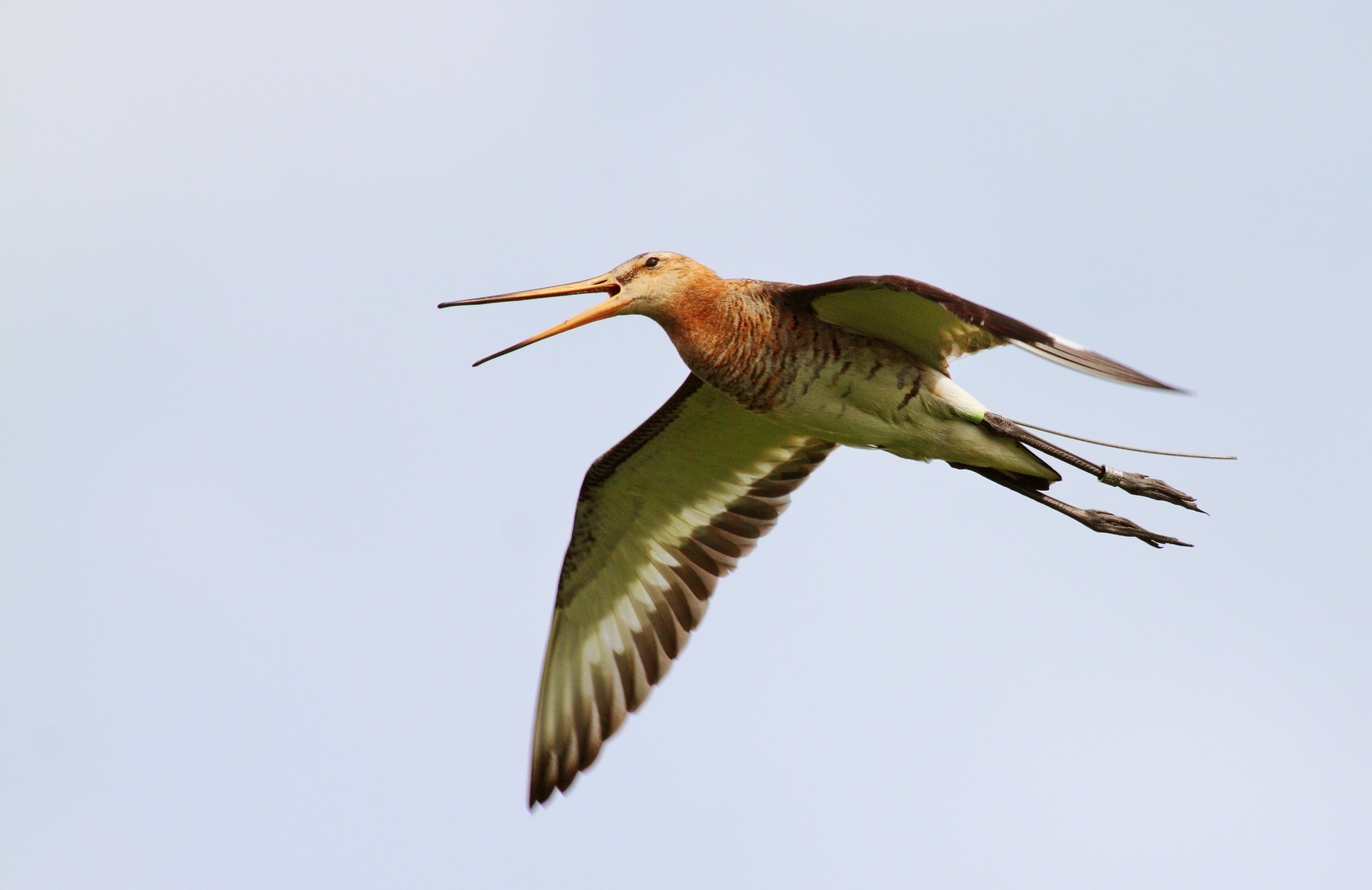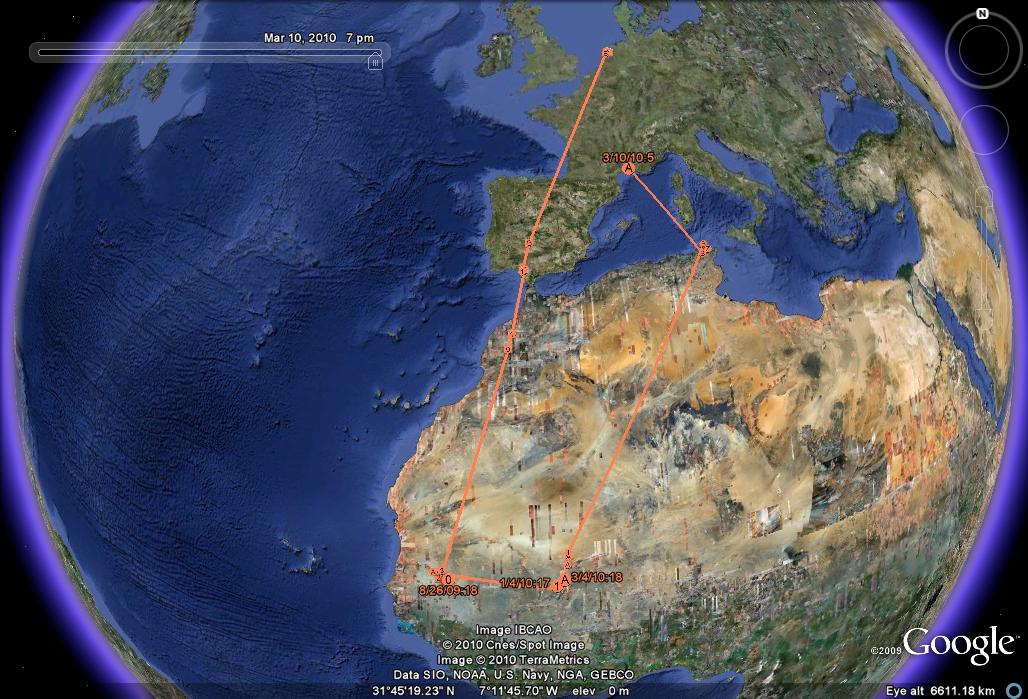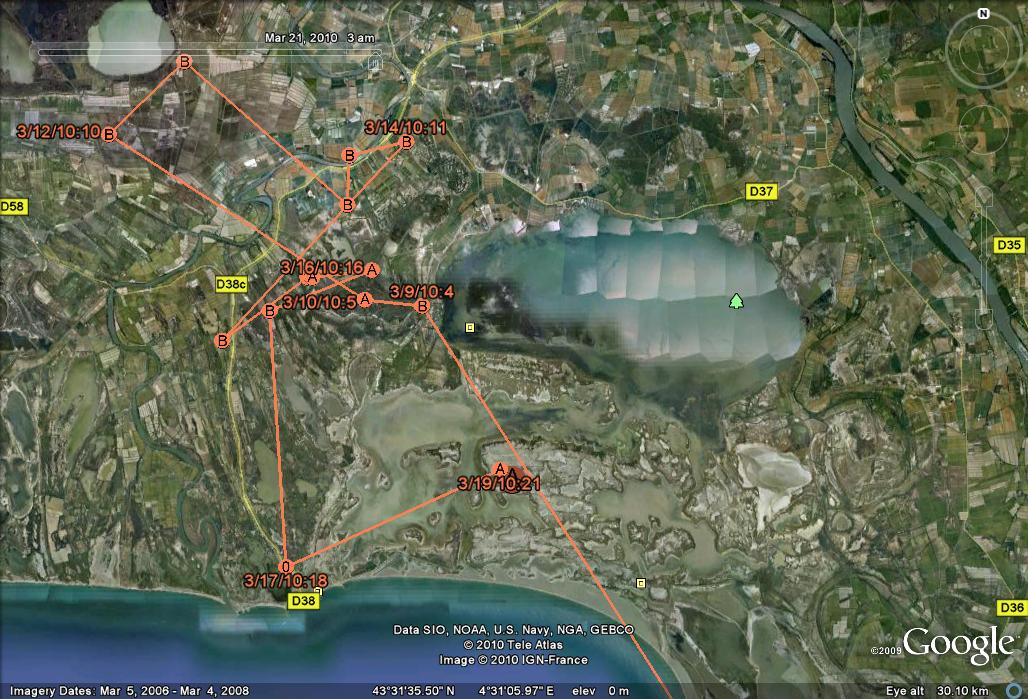In spring 2009, Theunis Piersma’s team at the Dutch Centre for Ecological and Evolutionary Studies fitted several black-tailed godwits with satellite tags to study their migration. One of these godwits, called “Skarl”, spent some time in the Camargue ((cf photo – légende « Black-tailed godwit » – crédit photo Theunis Piersma).
 After leaving the Netherlands, Skarl started by wintering in Southern Mauritania and Senegal, then in January flew to the floodplains of the Niger River in Mali. It left Mali on 4th March, crossed the Sahara and stooped over in Tunisia before arriving in the Camargue on 9th March in the marshes to the west of Vaccarès (caption “Its journey from May 2009 to March 2010”). Its stay in the Camargue lasted until 24th March (carte légende « Its trip in Camargue); the next day it was back in the Netherlands.
After leaving the Netherlands, Skarl started by wintering in Southern Mauritania and Senegal, then in January flew to the floodplains of the Niger River in Mali. It left Mali on 4th March, crossed the Sahara and stooped over in Tunisia before arriving in the Camargue on 9th March in the marshes to the west of Vaccarès (caption “Its journey from May 2009 to March 2010”). Its stay in the Camargue lasted until 24th March (carte légende « Its trip in Camargue); the next day it was back in the Netherlands.
|
Photo 1
|
Photo 2
|
This satellite monitoring is a first! Its results are therefore highly informative, for example the movements of this godwit from the Netherlands show a looped migration path, and in particular west-to-east movements in Africa during the winter. Such detailed monitoring also highlights the importance of wetlands all along the migratory path and its interconnections. Satellite monitoring is an information goldmine enabling us to broaden our understanding of the species.

